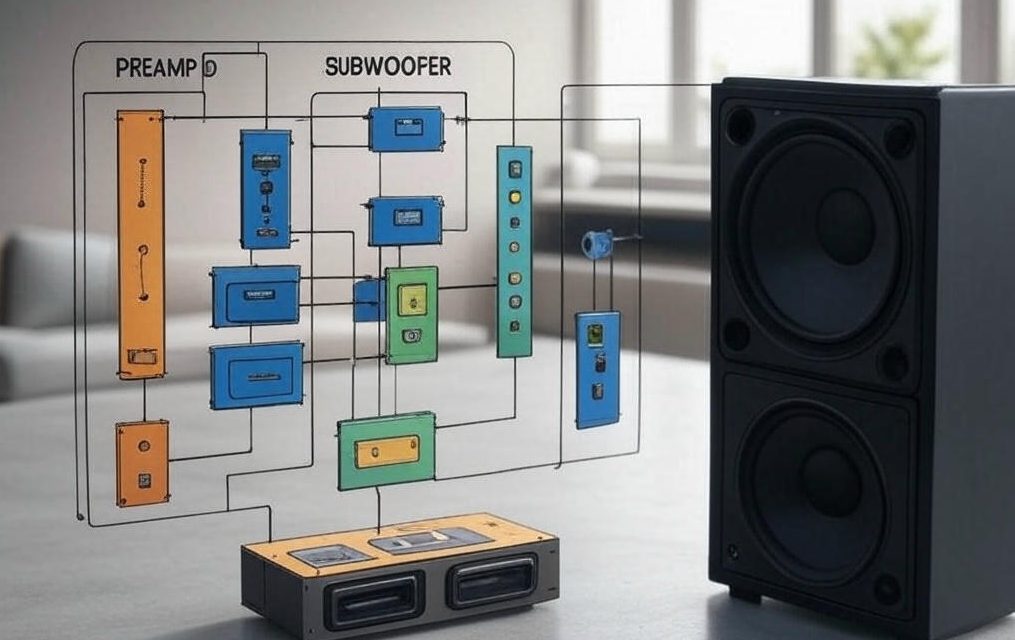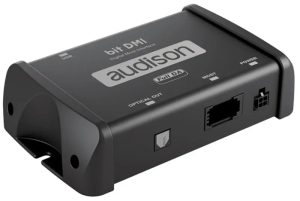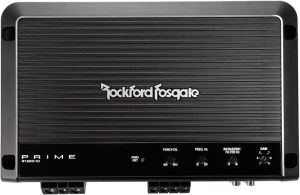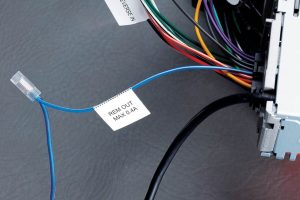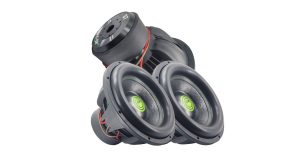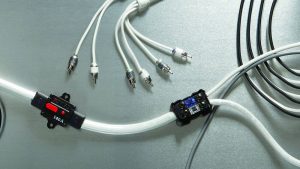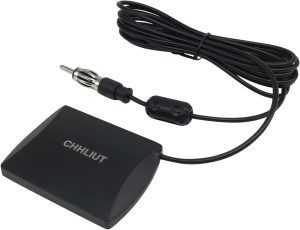Are you building your dream home audio setup but confused about whether to use preamp outputs or subwoofer outputs? Many audio enthusiasts struggle with this decision. The right choice depends on your specific needs, equipment, and desired sound quality. This guide breaks down everything you need to know about preamp outputs versus subwoofer outputs, helping you make the right connection for your audio system.
Contents
- What Is a Preamp Out?
- What Is a Subwoofer Out?
- Key Differences Between Preamp Out and Subwoofer Out
- When to Use Preamp Outputs
- When to Use Subwoofer Outputs
- Connection Options and Considerations
- Practical Applications for Different Systems
- Common Problems and Troubleshooting
- Making the Right Choice for Your System
- Integration with Modern Audio Technologies
- Conclusion
What Is a Preamp Out?
A preamp out connects the preamplifier section of your receiver or amplifier to external power amplifiers. Think of it as a gateway that passes along the audio signal after it has been processed but before it reaches the power amplification stage.
Preamp outputs carry the full-range audio signal, including all frequencies from the lowest bass to the highest treble. When you connect using preamp outputs, you’re essentially bypassing the internal power amplifier of your receiver while still using its processing features.
Many home theater receivers include preamp outputs for all channels, allowing you to upgrade your system with external amplifiers while maintaining the convenience of the receiver’s processing and switching capabilities. These connections pass along signals that have been volume-controlled and processed but haven’t yet been amplified to speaker-driving levels.
The signal from preamp outputs requires additional amplification before it can drive speakers. This makes these connections ideal for sending signals to powered speakers or external power amplifiers.
What Is a Subwoofer Out?
Subwoofer outputs serve a very specific purpose in audio systems. They send only low-frequency signals to your subwoofer, typically below 80-120Hz depending on your crossover settings.
Unlike preamp outputs, subwoofer outputs filter out mid and high frequencies. The signal has already gone through a low-pass filter inside your receiver or processor. This filtering happens regardless of your main speaker settings, ensuring that only bass frequencies reach your subwoofer.
Most modern AV receivers include a dedicated subwoofer output, often labeled “Sub Out” or “LFE” (Low-Frequency Effects). The subwoofer output signal is specifically designed to connect to powered subwoofers, which have their own built-in amplifiers.
The signal from a subwoofer output is typically a line-level signal that has been processed through the receiver’s bass management system. This means the receiver has already determined which frequencies go to the subwoofer based on your speaker size settings and crossover point.
Key Differences Between Preamp Out and Subwoofer Out
The main difference lies in the frequencies they transmit. Preamp outputs deliver full-range audio signals, while subwoofer outputs provide only low-frequency signals that have passed through a low-pass filter.
Preamp outputs usually require additional amplification before connecting to passive speakers. Subwoofer outputs are designed to connect directly to powered subwoofers with built-in amplifiers.
Another crucial distinction is flexibility. Preamp outputs give you more control over your system configuration. You can use them to build a custom multi-amplified system or to upgrade specific channels with better amplification.
Subwoofer outputs provide convenience for bass management. They handle the frequency division internally, making it easier to integrate a subwoofer into your system without external crossovers.
Signal routing also differs. Preamp outputs pass along the main channel signals, while subwoofer outputs combine low frequencies from all channels (when bass management is enabled) plus the dedicated LFE channel from surround sound formats.
When to Use Preamp Outputs
Preamp outputs shine when you want to upgrade your system’s power amplification. If your receiver lacks sufficient power for your speakers, connecting external amplifiers through preamp outputs can significantly improve sound quality and volume capability.
They’re also valuable when building a custom system with specialized amplifiers for different frequency ranges. Audiophiles often use preamp outputs to connect to high-end power amplifiers that match their specific speakers.
Using preamp outputs makes sense when you need more channels than your receiver’s built-in amplification provides. For example, you might use a 7.1 channel receiver’s preamp outputs to connect external amplifiers for a 9.1 or 11.1 system.
Home theater enthusiasts also use preamp outputs to add more powerful amplification for their front left, center, and right channels while using the receiver’s built-in amplification for surround speakers.
Preamp outputs offer flexibility to grow your system over time. You can start with a receiver’s built-in amplification and gradually add external power amplifiers as your budget allows.
When to Use Subwoofer Outputs
Subwoofer outputs are ideal when adding a powered subwoofer to your system. They simplify bass management by handling the crossover internally.
Use subwoofer outputs when you want the receiver to manage which frequencies go to your main speakers versus your subwoofer. This automatic bass management helps optimize system performance.
Subwoofer outputs work well in standard home theater setups where you have a receiver or processor and want to add bass reinforcement without complicating the system.
They’re perfect for connecting multiple subwoofers in larger rooms. Many modern receivers offer two subwoofer outputs to achieve more even bass distribution throughout the listening area.
Subwoofer outputs also make sense when you want to take advantage of room correction features like Audyssey, DIRAC, or YPAO, which can optimize the integration between your main speakers and subwoofer.
Connection Options and Considerations
When connecting via preamp outputs, you’ll need RCA or XLR cables depending on your equipment. High-quality cables help minimize signal loss and interference over longer runs.
For subwoofer connections, single RCA cables (sometimes called subwoofer cables) are standard. These cables are typically designed with additional shielding to prevent interference with the low-frequency signals.
If your receiver has two subwoofer outputs, you need to understand if they’re individually controlled or simply duplicates of the same signal. This affects how you set up and calibrate multiple subwoofers.
When using preamp outputs, match input sensitivities between your processor and amplifiers. Mismatched levels can cause issues with volume control or introduce distortion.
If you’re using both preamp outputs and your receiver’s built-in amplification simultaneously, ensure proper level matching to maintain the correct balance between all speakers.
Practical Applications for Different Systems
For a basic 2.1 stereo system, using the subwoofer output simplifies setup. The receiver handles the crossover, sending appropriate frequencies to both the main speakers and subwoofer.
In a high-end stereo system, audiophiles might prefer using preamp outputs to connect to an external stereo amplifier, with a separate preamp output for a subwoofer or dedicated bass amplifier.
For home theater systems, using the receiver’s subwoofer output for bass management while potentially using preamp outputs for front channel amplification creates an excellent balance of convenience and performance.
Multi-room audio setups benefit from preamp outputs, which can feed signals to amplifiers or powered speakers in different rooms while maintaining central control through the main receiver.
Professional audio installations often use preamp outputs extensively to create custom signal routing with external processing and amplification tailored to specific venues.
Common Problems and Troubleshooting
If you’re experiencing low output when using preamp connections, check if your amplifier’s input sensitivity matches the preamp output level of your receiver. Mismatches can cause significant volume differences.
Ground loop hum often plagues subwoofer connections. Try using a different power outlet for your subwoofer or consider a ground loop isolator if the hum persists.
Phase issues between main speakers and subwoofers might create muddy or thin bass. Experiment with the phase switch on your subwoofer or adjust its distance setting in your receiver.
When using preamp outputs, double-check that you haven’t disabled the outputs in your receiver’s setup menu. Many receivers allow you to turn off unused preamp outputs.
If no sound comes from your subwoofer, verify that bass management is correctly configured in your receiver’s settings and that you’ve selected the appropriate speaker size settings.
Making the Right Choice for Your System
Your room size plays a significant role in deciding between connection types. Larger rooms might benefit from the additional power available through external amplifiers connected via preamp outputs.
Your budget impacts your choices too. Using preamp outputs means investing in external amplification, which adds cost. Subwoofer outputs work with powered subwoofers without additional amplifiers.
Consider your listening preferences. If you primarily enjoy music, the flexibility of preamp outputs might be valuable. For movies and gaming where the receiver’s processing features shine, subwoofer outputs provide convenience.
Your existing equipment also matters. If you already own passive subwoofers, you’ll need to use preamp outputs and external amplification. For powered subwoofers, subwoofer outputs offer the simplest connection.
Your future upgrade path should influence your decision. Starting with a receiver that has comprehensive preamp outputs gives you more options to expand your system later.
Integration with Modern Audio Technologies
Modern room correction systems work well with subwoofer outputs. These systems measure and adjust the integration between main speakers and subwoofers automatically.
Streaming and network audio devices often connect to receivers with digital inputs, making the receiver’s internal processing and output configuration particularly important.
Smart home integration can affect how you configure your outputs. Voice control and automation systems might interact differently with various output configurations.
Wireless subwoofer adapters now allow you to place subwoofers without running cables, but they still connect to traditional subwoofer outputs on your receiver.
The growing popularity of object-based audio formats like Dolby Atmos and DTS:X increases the value of having numerous preamp outputs for adding height channels and additional amplification.
Conclusion
The choice between preamp outputs and subwoofer outputs depends on your specific needs, preferences, and system configuration. Subwoofer outputs offer convenience and simplified bass management for most standard home theater setups. Preamp outputs provide flexibility and upgrade potential for those looking to build more sophisticated or powerful systems.
Understanding the differences helps you make informed decisions about your audio system connections. Whether you choose the simplicity of subwoofer outputs or the flexibility of preamp outputs, ensuring proper setup and configuration will help you achieve the best possible sound quality.
As you build or upgrade your audio system, consider both your current needs and future expansion possibilities. The right connection choice today can save you time and money down the road while delivering the audio experience you desire.
